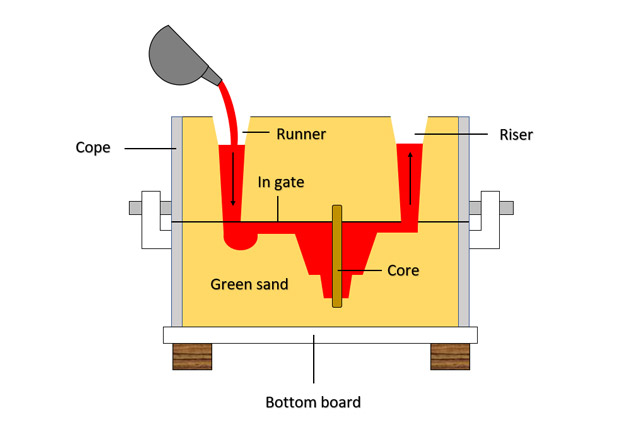More About Stahl Specialty Company
More About Stahl Specialty Company
Blog Article
The 8-Minute Rule for Stahl Specialty Company
Table of ContentsThe Stahl Specialty Company StatementsThe Main Principles Of Stahl Specialty Company About Stahl Specialty CompanyHow Stahl Specialty Company can Save You Time, Stress, and Money.Facts About Stahl Specialty Company Uncovered
There are numerous small differences between wrought and cast light weight aluminum alloys, such as that actors alloys can have a lot more significant amounts of other metals than wrought alloys. But the most noteworthy distinction in between these alloys is the manufacture process through which they will most likely to provide the end product. Apart from some surface therapies, cast alloys will exit their mold in virtually the exact solid form desired, whereas wrought alloys will undertake several alterations while in their solid state.If you think that a wrought alloy might be the very best for your project, have a look at some of our articles that discuss more concerning specific functioned alloys, such as Alloy 6061 and Alloy 6063. On the various other hand, if you assume a cast alloy would be better for you, you can discover more about some actors alloys in our Alloy 380 and Alloy 383 articles (coming quickly).

Having the experience and industry knowledge to engineer your castings for optimum manufacturing and quality outcomes will certainly streamline the job. Making light weight aluminum spreading calls for a complicated collection of procedures to accomplish the best outcomes. When choosing a new light weight aluminum foundry to partner with, guarantee they have comprehensive industry experience and are experienced concerning all facets of the light weight aluminum casting process: style, production, material analysis, and product screening.
The Ultimate Guide To Stahl Specialty Company
The factory should also have a proven track record of supplying outstanding items that meet or go beyond client assumptions. Quality control must additionally be at the top of your checklist when selecting an aluminum foundry. By collaborating with a qualified foundry who follows the requirements for top quality control, you can safeguard the honesty of your item and guarantee it meets your specs.
By selecting a business who supplies services that meet or exceed your product demands, you can be certain that your job will be completed with the utmost precision and effectiveness. Various parts require various production strategies to cast light weight aluminum, such as sand casting or die casting.

Die spreading is the name offered to the process of producing complex steel elements with use of mold and mildews of the element, likewise recognized as passes away. It generates more parts than any various other procedure, with a high level of precision and repeatability. There are three sub-processes that fall under the classification of die spreading: gravity pass away spreading (or irreversible mold spreading), low-pressure die spreading and high-pressure die casting.
Regardless of the sub-process, the die casting procedure can be broken down into 6 steps. After the purity of the alloy is examined, dies are produced. To prepare the craves spreading, it is essential that the passes away are tidy, to ensure that no residue from previous productions remain. After cleaning, the ejection lubrication is used to the die to ensure a smooth launch.
The pure steel, also referred to as ingot, is contributed to the furnace and maintained the molten temperature of the metal, which is then transferred to the injection chamber and injected right into the die. The stress is after that kept as the metal strengthens - Aluminum Casting. Once the steel solidifies, the cooling process begins
The thicker the wall surface of the part, the longer the cooling time due to the quantity of indoor steel that also requires to cool down. After the element is totally cooled, the die halves open and an ejection mechanism presses the part out. Adhering to the ejection, the die is shut for the following shot cycle.
The Only Guide for Stahl Specialty Company

This confirmed to be an unreliable test, due to the fact that the tester can cut into a piece and miss out on an area with porosity. Today, leading producers use x-ray screening to see the whole inside of parts without cutting into them. This permits them to much more properly approve or decline elements. To reach the finished item, there are three primary alloys utilized as die casting material to select from: zinc, light weight aluminum and magnesium.
Zinc is one of the most previously owned alloys for die casting due to its reduced price of raw materials. Its rust resistance likewise enables the components to be lengthy lasting, and it is one of the a lot more castable alloys due to its reduced melting factor - Casting Foundry.
6 Easy Facts About Stahl Specialty Company Shown
As stated, this alloy is just one of one of the most commonly used, yet manufactures will, at times, select aluminum over zinc due to light weight aluminum's manufacturing benefits. Aluminum is extremely cost-effective and among the more versatile alloys. Light weight aluminum is utilized for a variety of different products and sectors anything from window frames to aerospace materials.
Report this page